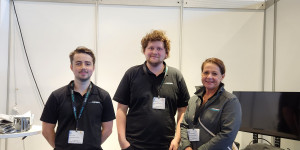Questions, answers and resources
What is this?
There a number of different pricing models you can adopt. What works best for your new product may depend on what other products you currently sell, how they are priced, and where you want your new product to sit in your pricing structure.
Risks
- Your pricing model makes the barrier for entry too high
- Your product's success depends on the appeal of your bundled products
- Your pricing model cheapens your product and undermines its value
Resources linked
- (Book) Business Model Generation: A Handbook for Visionaries, Game Changers, and Challengers
- (Book) Testing Business Ideas: A Field Guide for Rapid Experimentation
- (Capability) Beyond the Obvious
- (Capability) Starting a Business | Provided by Business NZ
- (Support) Business Mentoring | Provided by Business Mentor NZ
What is this?
If the value your product offers is comparable to a competitor's product, it might be the ease, value or added benefits of your business model that tips the balance in your favour.
Risks
- You're not offering strong reasons to choose your product over a competitor
- You make it too easy for customers to move on to another product
- You don't create 'stickiness' or brand loyalty through your business model
Resources linked
- (Book) The Invincible Company
- (Book) Ten Types of Innovation: The Discipline of Building Breakthroughs
- (Reference) Register a food business | Provided by MPI
What is this?
If you scale fast, it has an impact on everything from production to sales to logistics. You need to stress-test your plans and be sure your business is ready.
Risks
- You scale your product too fast and put stress on the wider business
- You don't scale fast enough to build momentum if your product starts to become successful
- The structure of your business makes it difficult to scale effectively
Resource(s) linked
- (Capability) FOCUS framework | Provided by Justin Wilcox
What is this?
A new product should have strong marketing, sales and customer service support from across your organisation.
Risks
- Your wider business isn't on board with the new product or believe in its potential
- Parts of the business don't plan ahead to support the new product effectively
- You don't currently have the capacity within the business to support your product
Resource(s) linked
- (Support) Business Mentoring | Provided by Business Mentors NZ
What is this?
Establishing a sell price will allow you to make revenue projections, which will help you determine the feasibility of the new product you're developing.
Risks
- You price too low and don't generate the revenue you need to operate successfully for the next 24 months
- You price too high and can't generate the volume of sales you need
- Your price is out of step with competing products offering similar value
- You have to lift your price or discount too early in the product's life cycle
Resources linked
- (Book) Beyond the Obvious
- (Capability) Capital Education | Provided by Callaghan Innovation

Next stop
Validate your path to commercial success
Review all 8 commercialisation topics to help give you reassurance that you have not missed anything that could come back to bite you later. It is important to do this early in your development process.


































